Wellness 2022: Plant Based – Recipes
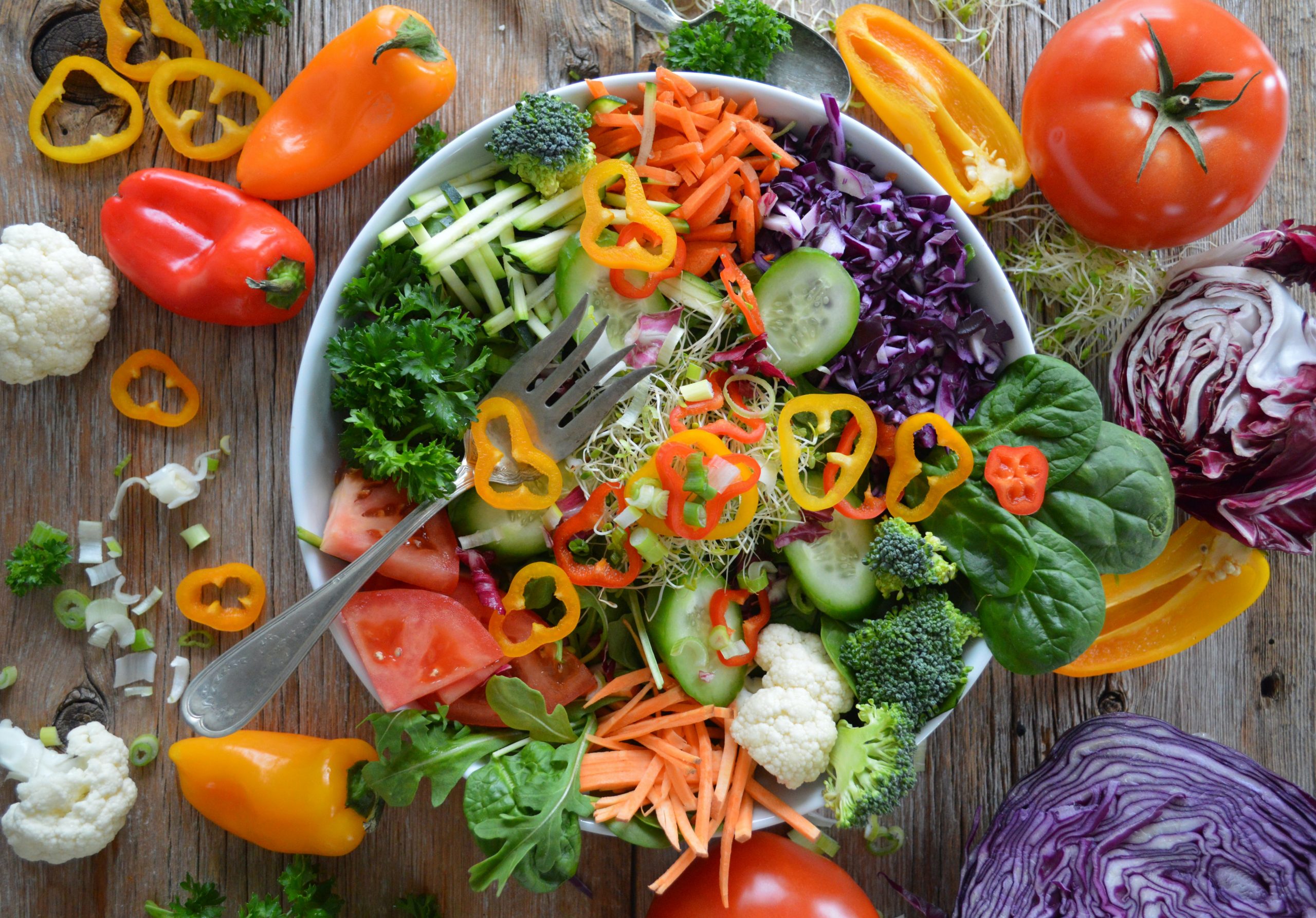
At the beginning of this program, our goal was to break your addiction to sugar. We did NOT, however, want to overwhelm anyone with too many changes too quickly. Now, as we work into week 5 we are going to be experimenting with a more plant-based approach.
Try to commit at the beginning of this week to have at least ONE plant-based meal a day. As time progresses, try to limit your meat intake to only once a day…then maybe only 2-3 times a week.
Below are a few recipes that will help add variety and flavor to your plant-based lifestyle.
Remember to tune into our cooking clinic tomorrow to see some hands-on demonstrations of preparing plant-based foods!
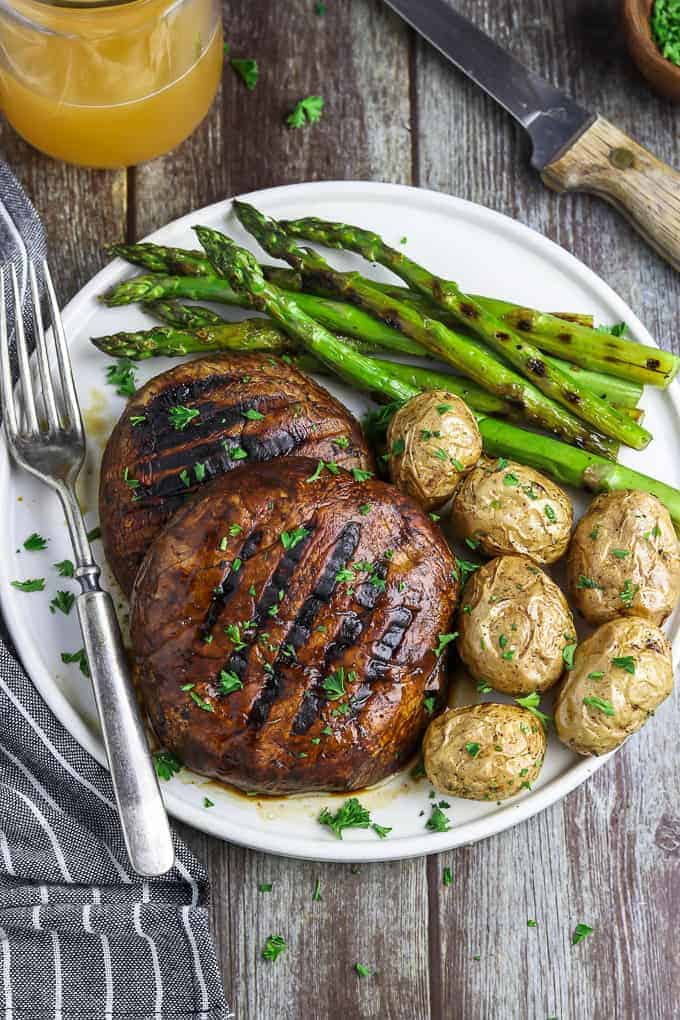


Wellness 2022: Plant Based – Fitness

Fitness Focus – Upper Body
BENEFITS OF UPPER BODY STRENGTH
1. IT CAN IMPROVE YOUR POSTURE
Strengthening the muscles in the back encourages a more upright posture.
A strong back is essential for good posture. A large percentage of the population live very sedentary lives, either through being hunched over a computer, plonked behind a desk or sat at the wheel of a car all day. As a result, most suffer from posterior imbalances. The chest muscles tighten, the back muscles weaken and the shoulders round forward (a condition known as kyphosis). Strengthening the muscles in the back encourages you to hold your shoulders back. It also improves your core strength, forcing the body to sit up tall.
2. IT CAN GIVE OTHER WORKOUTS A BOOST
Good upper-body strength will help you to get more out of your workouts
Improving your upper-body strength can also help your ability in other workouts. The majority of HIIT workouts and circuit classes contain upper-body exercises, such as planks, press-ups or mountain climbers, which require a good base level of upper-body strength. By strengthening your upper body, you will be able to make the most out of these workouts without having to regress the movements.
Working on your upper body also has benefits if you do endurance-based activities. Strong shoulders are important for cyclists to help position the top half of their body over the handlebars, with arms and shoulders taking a large part of the impact of the ride. It can also benefit swimmers, helping to propel them through the water more efficiently.
3. YOU WILL IMPROVE YOUR METABOLISM
A great side effect of strength training is its metabolism-boosting power. Like HIIT training, strength training is an excellent way to get rid of excess body fat when paired with a controlled calorie deficit diet – giving you a leaner, more toned appearance.
Ultimately, the more muscle mass you have, the higher your resting metabolic rate (and therefore the more calories you burn by just existing). Also, unlike traditional cardio, strength training causes you to continue burning more calories for up to 72 hours after the exercise is over.
4. IT’S INCREDIBLY REWARDING
Reaching a new fitness goal feels good physically and mentally. In terms of your upper body, this could be performing an unassisted pull-up, a full-range push-up, or progressing up to a heavier set of weights for an exercise like an overhead press.
5. EVERYDAY TASKS BECOME EASIER
Functional strength training can increase your capacity to go about your daily life – whether that’s picking things up or putting them down or pushing and pulling various objects. It’s moving your body with a purpose to improve your strength, balance, coordination and posture. You want a healthy body that not only looks good but can move freely of injury and last you for many years to come.
As a result of being stronger at life’s daily tasks, and a transformation of your body, you may find that your confidence starts to improve, too. This can greatly enhance your relationships, be that at work, with friends or a spouse.
ADDITIONAL PERKS:
Boost your workouts
The strength of your upper body can even help you in other training areas! HIIT workouts and circuit classes often involve exercises that require arm, back, chest, and shoulder strength. Planks, mountain climbers, and push-ups are examples of HIIT exercises that require full body strength. A strong base is important to perform well and get the most out of those types of workout classes!
Exercises like cycling and swimming require it as well. In order to position their body over the handlebars, cyclists need strong shoulders, and their arms and shoulders generally take most of the impact. Swimmers also need a strong torso and arms to help propel them through the water.
Streamlines everyday tasks
Most people go into exercise with the mindset that they want to lose weight, but the benefits go far beyond that. To be able to move freely with a reduced risk of injury and potentially live a longer life, you want a healthy body that looks AND feels good! Well guess what? Strength training can help!
Daily tasks, such as pushing and pulling things, picking up and putting things down, can be made easier with training. Weight training not only helps build strength, but it also improves balance, coordination, and posture.
Helps build a positive body image
We now know that having a strong upper body helps with posture, boosts other workouts, makes daily life easier, and gives you more confidence! Studies have shown that women who combine strength training with cardio have a more positive body image. Lifting weights won’t make you bulky! Most women do not engage in rigorous bodybuilding routines and produce one tenth of the testosterone men do.
Now, for today’s workout!
- Let me know if you did the workout.
- Was it hard?
Wellness 2022: Plant Based – Science

How to Get Started
While some people like to dive in headfirst and go 100-percent whole-food, plant-based overnight, we know that a sudden lifestyle shift isn’t for everyone. We asked one of our expert contributors, Craig McDougall, MD, for his advice for those who prefer a more gradual approach: “Add around 1,000 calories of legumes, whole grains, and starchy vegetables to your everyday routine. These starchy foods keep you full and satisfied, so you’ll naturally eat less of the animal products and processed foods that are making you sick.”
Forks Over Knives founder Brian Wendel has some good tips too. He encourages people to “not sweat the small stuff” and to look at the big picture instead: “Focus on the big changes like switching from meat, milk, and eggs to whole plant foods. Such changes dramatically improve the nutritional composition of your diet, so this is where you will find the most noticeable and measurable improvements in your health.”
Whether you go all-in or decide to make a gradual shift, the time to start making the change is now. You’ll be glad you did.
To learn more about the health benefits of a plant-based lifestyle, watch the documentary “Forks over Knives”. This film has changed the lives of so many across the globe.
Plant Based Diet and Fitness
One of the things that people worry about in terms of switching to a plant-based diet is that they won’t get enough protein. This is especially a concern for those who participate in intense fitness activities. But the truth is, plant-based diets are a perfect for those who work out regularly as well as professional athletes.
Today, there are several elite athletes who successfully compete and win while eating a plant-based diet. From tennis player Venus Williams to basketball player Kyrie Irving to ultramarathoner Scott Jurek, athletes who compete at high levels in different sports proudly support and talk about the importance of their plant-based diets.
Source: https://pha.berkeley.edu/2021/04/11/benefits-of-plant-based-diets-in-athletic-performance/
To learn the science behind how plant-based diets affect athletic performance, please watch this mind-blowing film which is currently streaming on Netflix. Whether you choose to go fully plant based or just integrate some more plant-based meals into your diet, the information in this film is valuable to all.
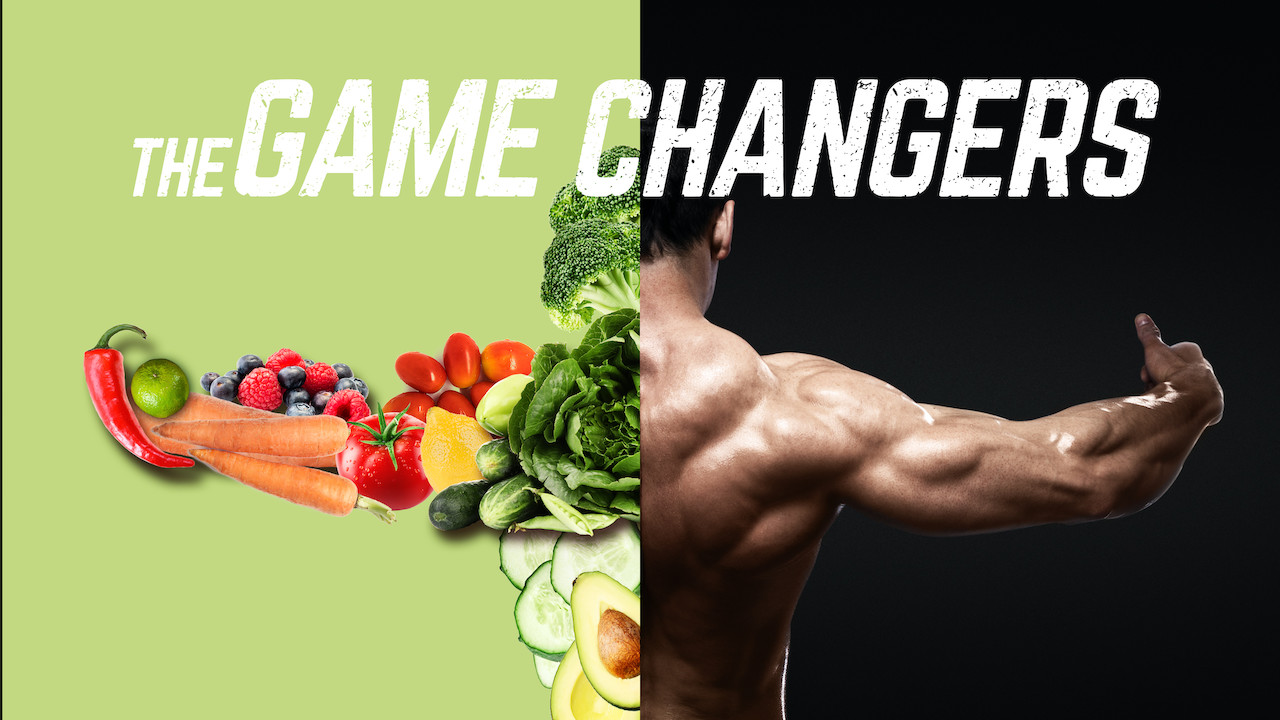
Wellness 2022: Plant Based – Intro

This week we are going to experiment with Plant-Based foods.
How a Plant-Based Diet Can Boost Your Health
One of the most powerful steps you can take to improve your health, boost energy levels, and prevent chronic diseases is to move to a plant-based diet. If you’ve seen Forks Over Knives, you know that science shows changing your nutrition is a powerful way to live longer, help the environment, and reduce your risk of getting sick.
There’s excellent scientific evidence that many chronic diseases can be prevented, controlled, or even reversed with a whole-food, plant-based diet. Scientific research highlighted in the landmark book The China Study shows that a plant-based diet can reduce the risk of type-2 diabetes, heart disease, certain types of cancer, and other major illnesses. Many people also report bigger fitness payoffs, more energy, reduced inflammation, and better health outcomes after making the switch.
What Is a Whole-Food, Plant-Based Diet?
A whole-food, plant-based diet is based on the following principles:
“Whole foods”: Natural foods that are not heavily processed. That means whole, unrefined, or minimally refined ingredients.
“Plant-based”: Food that comes from plants and is free of animal ingredients such as meat, milk, eggs, or honey.
There is overlap between whole-food, plant-based (WFPB) and vegan diets, but there are also some key differences. A vegan diet can include highly processed imitation meats and cheeses; a WFPB diet eschews these products in favor of whole or minimally processed, close-to-nature foods that make it easy to meet your nutritional needs.
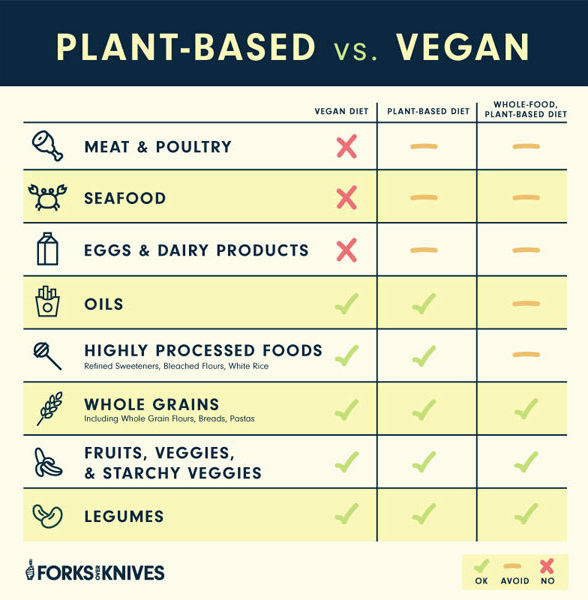
The five food groups
Below is a quick overview of the major food categories you’ll enjoy on a plant-based diet, with examples. For a more detailed breakdown of what to eat on a WFPB diet, check out The Forks Over Knives Diet Explained.
- Fruits: Any type of fruit including apple, bananas, grapes, strawberries, citrus fruits, etc.
- Vegetables: Plenty of veggies including peppers, corn, lettuce, spinach, kale, peas, collards, etc.
- Tubers: Root vegetables like potatoes, carrots, parsnips, sweet potatoes, etc.
- Whole grains: Grains, cereals, and other starches in whole form, such as quinoa, brown rice, whole wheat, oats, popcorn, etc.
- Legumes: Beans of any kind, plus lentils, pulses, etc.
There are plenty of other foods you can also enjoy, including nuts, seeds, avocados, tofu, tempeh, whole-grain flours and breads, and plant-based milks. However, we recommend eating these foods in moderation, because they are more calorie-dense and can contribute to weight gain.
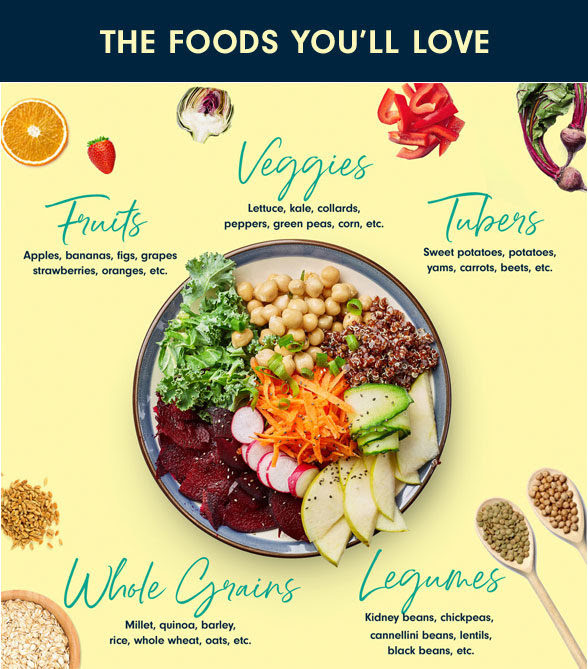
The Benefits of a Whole-Food, Plant-Based Diet
There are several major benefits to moving to plant-based nutrition, all supported by science. These benefits include:
- Easy weight management: People who eat a plant-based diet tend to be leaner than those who don’t, and the diet makes it easy to lose weight and keep it off—without counting calories.
- Disease prevention: Whole-food, plant-based eating can prevent, halt, and in some cases reverse chronic diseases. The scientific evidence is especially overwhelming when it comes to heart disease and diabetes, but research has also linked plant-based diets to lower rates of arthritis, improved liver function, and healthier kidneys.
- A lighter environmental footprint: A plant-based diet places much less stress on the environment.
Easy Weight Management
If you’re looking to lose weight (and keep it off), a whole-food, plant-based diet is one of the most powerful tools at your disposal. Research shows that people who eat plant-based diets tend to be leaner than those who don’t. A 2020 review looked at 19 intervention studies—i.e., studies in which participants were assigned a diet for a specified period of time—and found that in each one, participants assigned to plant-based diets lost weight.
Why are healthy plant-based diets so effective for weight loss? Research suggests that the crux is calorie density. Dairy products and highly processed foods are high in calories yet low in the fiber that helps us feel full and fuels a healthy gut microbiome. Whole plant foods are low in calories, meaning you can eat a high volume of food without exceeding your calorie needs. That’s why on a whole-food, plant-based diet, you’re encouraged to eat until you’re satisfied—no calorie counting or portion control necessary.
Improve Heart Health
A whole-food, plant-based diet is extremely effective at promoting cardiovascular health and preventing, halting, and in some cases even reversing heart disease, the leading cause of death in the United States. A 2019 review of 99 studies found that diets rich in whole plant foods were associated with a significantly lower risk of cardiovascular disease compared with diets high in meat and dairy products.
There are several reasons for this. Animal-based foods are high in saturated fat and cholesterol, which raise blood cholesterol levels, causing fatty, wax-like plaque to build up in the arteries. Highly processed foods often contain excessive salt, which raises blood pressure, damaging the lining of the arteries over time. By eliminating these harmful foods from your diet and replacing them with whole plant foods, you can bring down your cholesterol levels, blood pressure, and risk of heart disease.
Prevent or Reverse Type 2 Diabetes
Healthy plant-centered diets are associated with significantly lower rates of type 2 diabetes and improved outcomes in those who already have this dangerous chronic condition.
A 2018 report in BMJ Open Diabetes Research & Care found that for people with type 2 diabetes, plant-based diets were more beneficial than the diets recommended by several diabetes associations, offering greater improvements in physical and emotional well-being.
Plant-based diets are low in saturated fat (a culprit behind insulin resistance) and high in fiber, which helps the body to regulate blood sugar and properly absorb nutrients. Plant-based diets also reduce the risk of being overweight or obese, a primary risk factor for type 2 diabetes.
It’s Better for the Planet
Choosing a vegan or whole-food, plant-based diet is one of the best things you can do for the environment.
The main reason is that raising animals for food is an incredibly inefficient use of resources. Growing crops to feed animals “introduces a major extra step of waste relative to the efficiency of us just eating the plant foods directly,” explains David L. Katz, MD, MPH, FACPM, FACP, FACLM. “If you just eat the plants, you cut out the middleman.” A 2018 analysis found that livestock provides just 18 percent of calories consumed globally but takes up 83 percent of farmland. Vegan and plant-based, whole-food diets are also associated with fewer climate-altering greenhouse gas emissions.
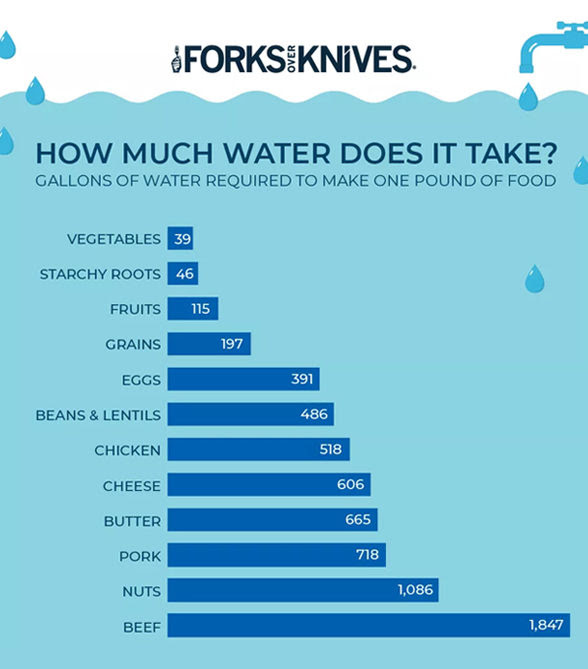
It’ll Save You Money on Groceries
Whole plant foods are not only the healthiest and most sustainable foods around; they’re also some of the most affordable. In fact, going plant-based can cut grocery bills by $750 a year per person, according to research published in the Journal of Hunger & Environmental Nutrition.
When you stock your kitchen with WFPB staples such as brown rice, potatoes, and dried beans, you can assemble nutritious, satisfying meals for just a few dollars.
Wellness 2022: Gut Health – Rest & Integrate
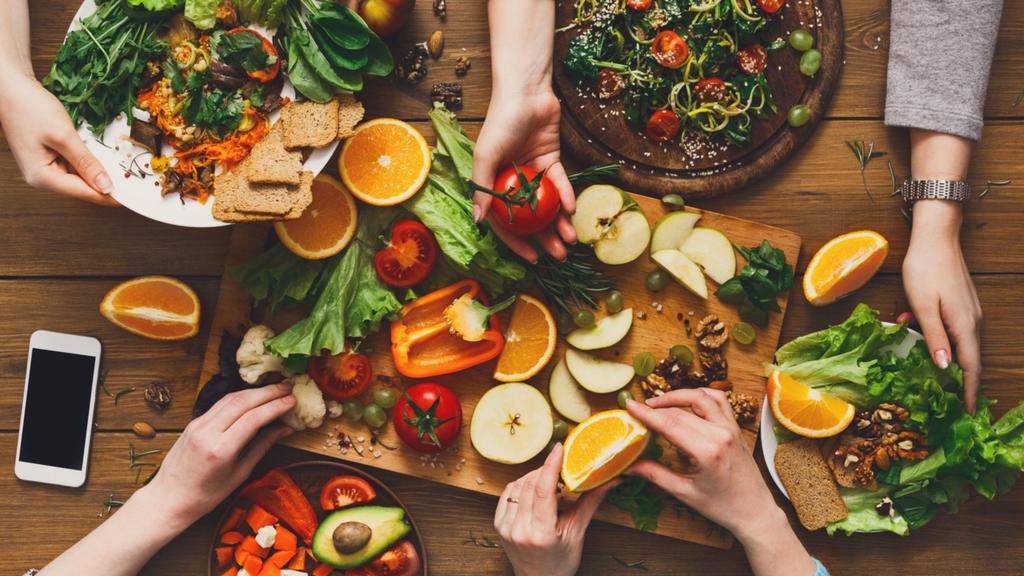
Gut Health and Stress
This week you have learned how stress affects your gut health. Considering the state of the world for the past two-plus years, it’s no wonder we’re all so stressed. In March 2021, the American Psychological Association (APA) “Stress in America” report found that 62% of Americans coping with pandemic stress resulted in unhealthy weight gain, excessive drinking, and poor mental health. Similarly, October 2021 data from the APA found that younger demographics may be disproportionately affected, with 79% of Gen Z adults and 74% of millennials experiencing behavior changes from stress.

14 Simple Ways to Relieve Stress
- Get more physical activity
If you’re feeling stressed, moving your body in cardio exercise 2 days per week significantly reduces overall perceived stress and feelings of depression. - Follow a healthy diet
Your diet affects every aspect of your health, including your mental health. Not eating enough nutrient-dense whole foods may increase your risk of deficiencies in nutrients that are essential for regulating stress and mood, such as magnesium and B vitamins. - Minimize phone use and screen time
Smartphones, computers, and tablets are an unavoidable part of everyday life for many people but spending too much time in front of screens in general is associated with lower psychological well-being and increased stress levels in both adults and kids. - Consider supplements
Several vitamins and minerals play an important role in your body’s stress response and mood regulation. As such, a deficiency in one or more nutrients may affect your mental health and ability to cope with stress. - Practice self-care
Setting aside time to practice self-care may help reduce your stress levels. Practical examples include:
- going for a walk outside
- taking a bath
- lighting candles
- reading a good book
- exercising
- preparing a healthy meal
- stretching before bed
- getting a massage
- practicing a hobby
- using a diffuser
- Reduce your caffeine intake
Caffeine is a chemical found in coffee, tea, chocolate, and energy drinks that stimulates your central nervous system. Consuming too much may worsen and increase feelings of anxiety and may affect your sleep. - Spend time with friends and family
Friends and family may help you get through stressful times and cope with stress. Having a social support system is important for your overall mental health. - Create boundaries and learn to say no
Not all stressors are within your control, but some are. Putting too much on your plate may increase your stress load and limit the amount of time you can spend on self-care. - Learn to avoid procrastination
Another way to take control of your stress is to stay on top of your priorities and avoid procrastinating. Procrastination can harm your productivity and leave you scrambling to catch up when then causes stress which negatively affects your health and sleep quality. - Take a yoga class
Yoga has become a popular method of stress relief and exercise among all age groups. While yoga styles differ, most share a common goal — to join your body and mind by increasing body and breath awareness. - Practice mindfulness
Mindfulness describes practices that anchor you to the present moment. Meditating on a consistent basis, even for short periods, may help boost your mood and decrease symptoms of stress and anxiety. - Spend time with those you love
Touch can have a calming effect and help you better cope with stress. When you cuddle with a loved one or snuggle with your pet, your body releases oxytocin — a hormone that’s linked to positive mood. - Spend time in nature
Spending more time in green spaces such as parks and forests and being immersed in nature are healthy ways to manage stress. - Practice deep breathing
Mental stress activates your sympathetic nervous system, sending your body into fight-or-flight mode. Deep breathing exercises may help activate your parasympathetic nervous system, which controls the relaxation response.
Wellness 2022: Gut Health – Takeaway

The gut microbiome
The incredible complexity of the gut and its importance to our overall health is a topic of increasing research in the medical community. Numerous studies in the past two decades have demonstrated links between gut health and the immune system, mood, mental health, autoimmune diseases, endocrine disorders, skin conditions, and cancer.
At one time, our digestive system was considered a relatively “simple” body system, comprised essentially of one long tube for our food to pass through, be absorbed, and then excreted.
The term “gut microbiome” refers specifically to the microorganisms living in your intestines. A person has about 300 to 500 different species of bacteria in their digestive tract. While some microorganisms are harmful to our health, many are incredibly beneficial and even necessary to a healthy body.
According to Dr. E. M. Quigley in his study on gut bacteria in the Journal of Gastroenterology and Hepatology, having a wide variety of these good bacteria in your gut can enhance your immune system function, improve symptoms of depression, help combat obesity, and provide numerous other benefits.
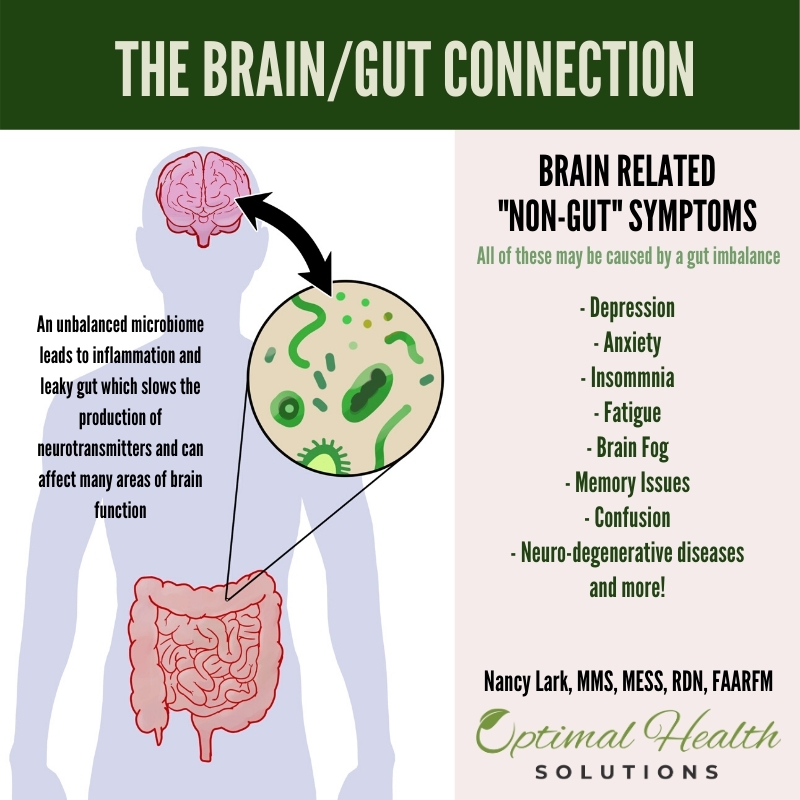
7 Signs of an unhealthy gut
Many facets of modern life such as high-stress levels, too little sleep, eating processed and high-sugar foods, and taking antibiotics can all damage our gut microbiome. This in turn may affect other aspects of our health, such as the brain, heart, immune system, skin, weight, hormone levels, ability to absorb nutrients, and even the development of cancer.
There are a number of ways an unhealthy gut might manifest itself. Here are seven of the most common signs:
- Upset stomach
Stomach disturbances like gas, bloating, constipation, diarrhea, and heartburn can all be signs of an unhealthy gut. A balanced gut will have less difficulty processing food and eliminating waste. - A high-sugar diet
A diet high in processed foods and added sugars can decrease the amount of good bacteria in your gut. This imbalance can cause increased sugar cravings, which can damage your gut still further. High amounts of refined sugars, particularly high-fructose corn syrup, have been linked to increased inflammation in the body. Inflammation can be the precursor to a number of diseases and even cancers. - Unintentional weight changes
Gaining or losing weight without making changes to your diet or exercise habits may be a sign of an unhealthy gut. An imbalanced gut can impair your body’s ability to absorb nutrients, regulate blood sugar, and store fat. Weight loss may be caused by small intestinal bacterial overgrowth (SIBO), while weight gain may be caused by insulin resistance or the urge to overeat due to decreased nutrient absorption. - Sleep disturbances or constant fatigue
An unhealthy gut may contribute to sleep disturbances such as insomnia or poor sleep, and therefore lead to chronic fatigue. The majority of the body’s serotonin, a hormone that affects mood and sleep, is produced in the gut. So gut damage can impair your ability to sleep well. Some sleep disturbances have also been linked to risk for fibromyalgia. - Skin irritation
Skin conditions like eczema may be related to a damaged gut. Inflammation in the gut caused by a poor diet or food allergies may cause increased “leaking” of certain proteins out into the body, which can, in turn, irritate the skin and cause conditions such as eczema. - Autoimmune conditions
Medical researchers are continually finding new evidence of the impact of the gut on the immune system. It’s thought that an unhealthy gut may increase systemic inflammation and alter the proper functioning of the immune system. This can lead to autoimmune diseases, where the body attacks itself rather than harmful invaders. - Food intolerances
Food intolerances are the result of difficulty digesting certain foods (this is different than a food allergy, which is caused by an immune system reaction to certain foods). It’s thought that food intolerances may be caused by poor quality of bacteria in the gut. This can lead to difficulty digesting the trigger foods and unpleasant symptoms such as bloating, gas, diarrhea, abdominal pain, and nausea. There is some evidence that food allergies may also be related to gut health.

7 Things you can do for your gut health
- Lower your stress levels
Chronic high levels of stress are hard on your whole body, including your gut. Some ways to lower stress may include meditation, walking, getting a massage, spending time with friends or family, diffusing essential oils, decreasing caffeine intake, laughing, yoga, or having a pet. Here are 10 ways to reduce feeling stressed. - Get enough sleep
Not getting enough or sufficient quality of sleep can have serious impacts on your gut health, which can in turn contribute to more sleep issues. Try to prioritize getting at least 7–8 hours of uninterrupted sleep per night. Your doctor may be able to help if you have trouble sleeping. - Eat slowly
Chewing your food thoroughly and eating your meals more slowly can help promote full digestion and absorption of nutrients. This may help you reduce digestive discomfort and maintain a healthy gut. - Stay hydrated
Drinking plenty of water has been shown to have a beneficial effect on the mucosal lining of the intestines, as well as on the balance of good bacteria in the gut. Staying hydrated is a simple way to promote a healthy gut. - Take a prebiotic or probiotic
Adding a prebiotic or probiotic supplement to your diet may be a great way to improve your gut health. Prebiotics provide “food” meant to promote the growth of beneficial bacteria in the gut, while probiotics are live good bacteria. People with bacterial overgrowth, such as SIBO, should not take probiotics. Not all probiotic supplements are high quality or will actually provide benefit. It’s best to consult your healthcare provider when choosing a probiotic or prebiotic supplement to ensure the best health benefit. - Check for food intolerances
If you have symptoms such as cramping, bloating, abdominal pain, diarrhea, rashes, nausea, fatigue, and acid reflux, you may be suffering from a food intolerance. You can try eliminating common trigger foods to see if your symptoms improve. If you are able to identify a food or foods that are contributing to your symptoms, you may see a positive change in your digestive health by changing your eating habits. - Change your diet
Reducing the amount of processed, high-sugar, and high-fat foods that you eat can contribute to better gut health. Additionally, eating plenty of plant-based foods and lean protein can positively impact your gut. A diet high in fiber has been shown to contribute tremendously to a healthy gut microbiome.
4 Types of food for gut health
Diet and gut health are very closely linked. Avoiding processed foods, high-fat foods, and foods high in refined sugars is extremely important to maintaining a healthy microbiome, as these foods destroy good bacteria and promote the growth of damaging bacteria. There are also a number of foods you can eat that actively promote the growth of beneficial bacteria, contributing to your overall health. These foods include:

- High-fiber foods
High-fiber foods such as legumes, beans, peas, oats, bananas, berries, asparagus, and leeks have shown a positive impact on gut health in numerous studiesTrusted Source. - Garlic and onion
Garlic and onion may have some anti-cancer and immune system-enhancing properties based on various studies, which are closely tied to some of the primary functions of the gut. Some of these benefits are anecdotal, although some research has been done. - Fermented foods
Fermented foods such as kimchi, sauerkraut, yogurt, tempeh, miso, and kefir are great dietary sources of probiotics. While the quality of these foods may vary, their benefits on the gut microbiome are well studied. - Collagen-boosting foods
Collagen-rich foods such as bone broth and salmon may be beneficial to overall health and gut health specifically. Many of these benefits are anecdotal conclusions and further research could be done. You could also try to boost your body’s own collagen production through foods. Try adding a variety of foods, like mushrooms, good dairy, or certain meats.
Eat, sleep, and be healthy
The human gut is more complex than previously thought and has a huge impact on whole-body health. A healthy gut contributes to a strong immune system, heart health, brain health, improved mood, healthy sleep, and effective digestion, and it may help prevent some cancers and autoimmune diseases. There are a number of lifestyle changes you can make to positively affect your gut health and your overall health as a result.
Journal Entry
- What did you learn this week?
- Are you willing to work on your gut health?
- What items can you really add to your diet on a regular basis to improve your gut biome?
As we continue through the next few weeks we will be touching on MANY holistic methods to maintain and improve your health, some even ancient philosophies. Have you ever put much thought into how so many civilizations maintained their health for thousands of years?
Wellness 2022: Gut Health – Videos

Today we will show you how to make Ginger Bug, a simple drink that can dramatically improve your gut health.
Want to try more, here are some other ideas.
Wellness 2022: Gut Health – Recipes

Hello, my friends!
I hope you have been able to add some gut-boosting food items to your roster this week. Remember that each of these weeks is a progression, and we want you to maintain the parts that are working for you along the way to your daily routine. Please continue to experiment with lots of fun recipes, and remember to have some healthy choices on hand around the house for a quick snack or meal.
Take a look at a couple of recipes in the links below. Gather the items for the Ginger Bug – as that is what we will be demonstrating tomorrow!
And remember – in the cooking clinics we often give you tips and tricks for tastier and easier versions of these same recipes!
Wellness 2022: Gut Health – Fitness

FITNESS FOCUS: ABS
6 Benefits of Abdominal Workouts:
It’s surprising how many people miss the abdominal muscles when working out. In doing so, they miss out on the numerous benefits of abdominal workouts. If you’ve been skipping your ab session, let’s take a look at some of the key benefits of ab workouts…
THEY’RE NOT JUST THERE FOR THE 6 PACK LOOK!
Abdominal muscles play a crucial role in posture, support of the spine, balance, stability, and respiratory functions such as breathing.
Building strength and endurance in these muscles is essential as it creates benefits such as improved posture, reduced back pain, improved balance and stability and potentially assistance with breathing.
IMPROVED PERFORMANCE IN SPORTS
Many sports or strenuous activities require balance, stability and core strength. Abdominal workouts target these muscles and thus provide you with core strength whilst performing the activity.
These workouts enable players to transfer more energy from their core to their limbs, thus, increasing their performance and scores, as opposed to players who have weaker abdominal muscles.
This could also relate to physical activities such as tennis, golf or even doing household chores!
REDUCED LOWER BACK PAIN
Lower back pain is a problem affecting many people from all backgrounds. Weak abdominal muscles contribute to increased lower back pain. Lower back muscles that are not exercised become rigid in the joint areas and may lead to chronic lower back pain.
Abdominal exercises target these back muscles and the spine, making them more flexible and less rigid, thus reducing lower back pain.
These workouts also improve body posture when walking, standing or sitting, thus reducing the occurrence of back pain associated with poor posture.
IMPROVED POSTURE AND STABILITY
As we’ve referenced, abdominal workouts target the abdominal muscles which are important for posture and balance. Stability is especially vital for people in sports, and the elderly who are at a risk of constant tumbles and slips.
Abs workouts strengthen the muscles around the spine and improve posture as the body’s weight is correctly distributed. Having a good posture is key in increased confidence and good health for the spine.
Abdominal workouts also improve harmony between muscles in the body which plays a major role in balance, posture, and stability.
IMPROVED ABILITY TO BEAR WEIGHT
Abdominal exercises provide strength to bear weight. An individual who engages in abdominal workouts is better placed to lift heavier weights without causing damage to the spine. This is because abs workouts strengthen the torso and help to provide a stable base for lifting.
FIRMER WAISTLINE
Abdominal workouts help in reducing body fat, a problem associated with many lifestyle diseases such as diabetes and obesity. By increasing muscle mass in the abdominal region, the body metabolism increases and more fats are burned. This leads to a trimmer, leaner body.
Abdominal muscles require strengthening just like other muscles of the body. While these workouts contribute to a good looking and trim body, having the inner muscular strength is a major goal to aim at when doing abdominal workouts.
VARIETY IS KEY
Abdominal workouts, however, do not eliminate body fat on their own. If you are looking to actually lose weight, then variety is key. Try a nice balanced workout that includes plenty of cardiovascular exercise, some resistance training for overall strength and of course, remember to work those abs!
For many of you, you achieve a balanced workout in the AquaGym Fitness classes that you attend!
Now for today’s Fitness Focus Workout:
Journal Homework:
We hope you enjoyed today’s workout! Make sure you are tracking any physical activity you are doing in your Wellness Journals!
- Are you taking steps to do something physical each day?
- Do you feel like you have more energy on the days you are more active?
- What can you do to increase your physical activity each day?

Wellness 2022: Gut Health – Science

Let’s Learn About Fermentation
Naturally fermented foods are getting a lot of attention from health experts these days because they may help strengthen your gut microbiome—the 100 trillion or so bacteria and microorganisms that live in your digestive tract. Researchers are beginning to link these tiny creatures to all sorts of health conditions from obesity to neurodegenerative diseases.
Fermented foods are preserved using an age-old process that not only boosts the food’s shelf life and nutritional value but can give your body a dose of healthy probiotics, which are live microorganisms crucial to healthy digestion, says Dr. David S. Ludwig, a professor of nutrition at the Harvard School of Public Health.
DAIRY YOGURT
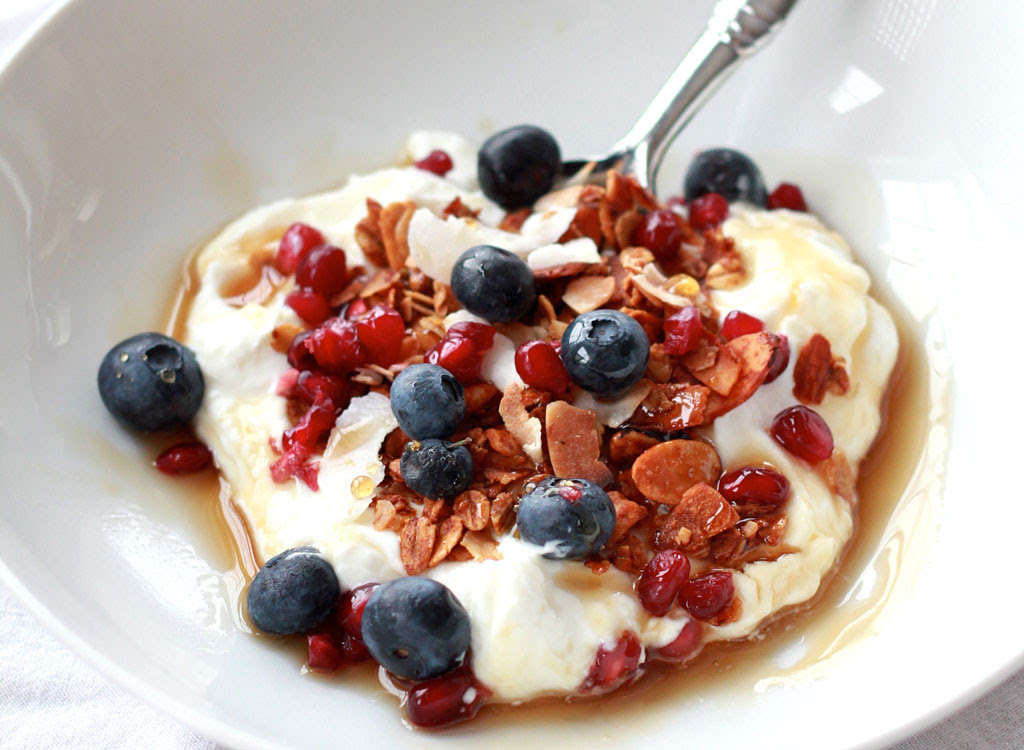
Did you know that the morning yogurt you’ve been eating for years is actually a fermented food? Yogurt is made by adding good bacteria (streptococcus thermophilus and Lactobacillus bulgaricus) into heated milk. It thickens up from the lactic acid that’s produced by the bacteria and becomes the product that you’re ever-so-familiar with. The higher the fat content in the milk, the thicker the consistency. And when buying yogurt from the grocery store, make sure to check for the ones labeled ‘live active cultures’ and stay away from the ones with added sugar and syrups.
Eat This!: Top some of your dearest savory dishes with Greek yogurt or make a fat-burning smoothie with yogurt, fruits, greens and chia seeds!
KEFIR

Kefir is basically drinkable yogurt but contains different types of beneficial bacteria and may be surprisingly more nutritious. Kefir can actually colonize the intestinal tract making digestion even easier. It also supplies high levels of probiotics, complete protein, vitamin B12, and other essential minerals. To make kefir at home, you only need one cup of whole-fat milk and a teaspoon of kefir grains, which is the bacteria and yeast that is going to ferment the kefir. Let the mixture sit at room temperature for about 24 hours and then strain the grains. (Tip: These grains can be used again in your next batch.) Before you know it, you’ll have a tangy, thick, creamy drink that’s ready to enjoy.
Eat This!: Make kefir pancakes with 1 cup almond flour, 2 tablespoons coconut flour, ½ cup kefir, 3 eggs, ½ teaspoon baking soda, 2 tablespoons coconut oil, and a sprinkle of cinnamon.
NON-DAIRY YOGURT
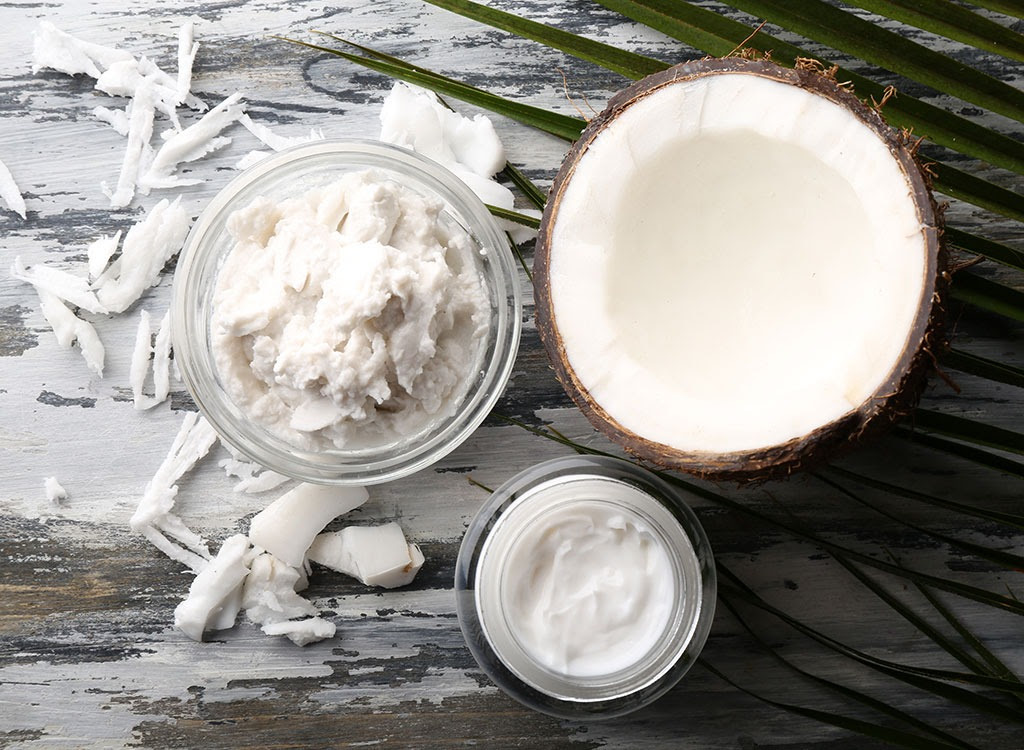
Not a fan of dairy milk? You can still get your fermentation on with yogurts from other non-dairy sources like coconuts. Since the structure of coconuts is different from cow’s milk yogurt, you’ll need to add probiotic powder and tapioca starch to get a spoonful with a creamy texture. You can also make coconut milk kefir the same way you would make an animal milk kefir!
Eat This!: Make a parfait using coconut yogurt, granola, nuts, coconut shavings, banana, and blueberries. Easy, simple, and delish!
MISO

Miso is a well-known ingredient you may have seen on menus at sushi restaurants. It’s a traditional Japanese paste that’s made from fermenting soybeans with salt and koji. Not only is it a complete protein (meaning it contains all essential amino acids), but it also stimulates the digestive system, strengthens the immune system and reduces the risk for multiple cancers. This paste has been used for centuries in Asian cultures to provide health benefits but is becoming even more known in the U.S. because of its nutrient-dense properties.
Eat This!: The flavors of miso are both sweet and salty (technically considered umami), so it’s an awesome way to add flavor to a salad dressing by combining oil, a light vinegar, miso, and spices. Miso also goes great in soup or as a dipping sauce!
TEMPEH
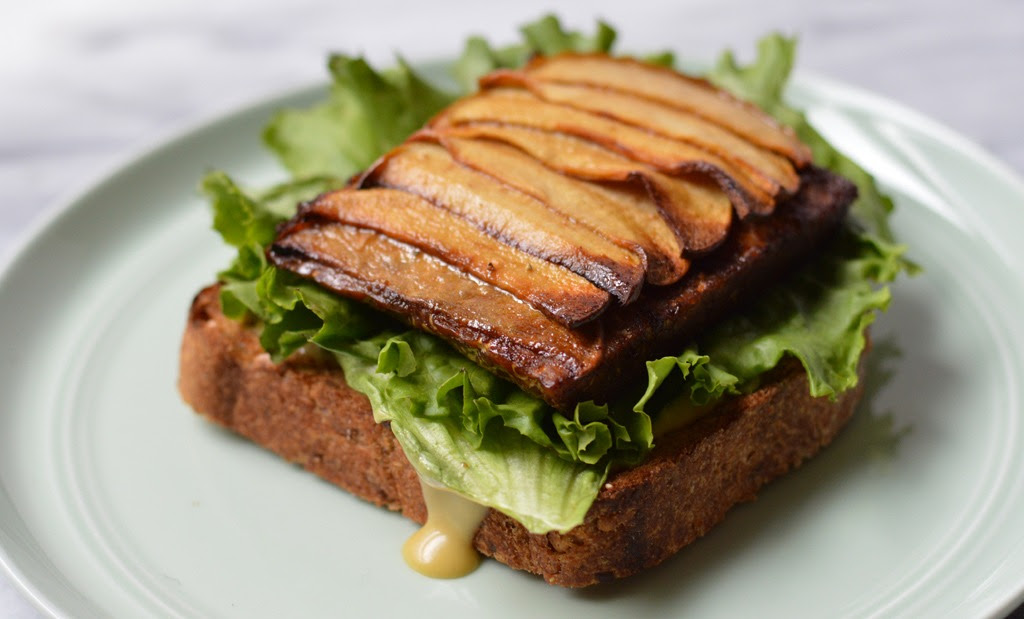
Tempeh burgers or tempeh nuggets are the perfect plant-based alternative to an animal-based protein, and vegetarians and vegans often rave about it. Tempeh is a fermented soy product that has a meaty, tender bite with a semi-dull flavor. Think of tempeh as a blank canvas ready to be painted on; you can add spices, seasonings, or sauces to tempeh because it will absorb any flavor it’s handed, and you’ll forget you’re not eating meat! And let’s not forget the nutritional benefits that come along with it: A standard 3-ounce serving of tempeh has about 16 grams of protein and 8 percent of the day’s recommended calcium.
Eat This!: Try out Meatless Monday and top some zucchini noodles (or zoodles) with vegan tempeh meatballs. Cover it with a homemade marinara sauce and enjoy!
SOURDOUGH BREAD

You can find sourdough bread at just about every supermarket there is. Unlike many may think, sourdough is not a flavor, it’s actually the process where wild yeast and friendly bacteria break down the gluten and sugar occurring, and it becomes good-for-you protein, vitamins, and minerals. “If you’re trying to increase your probiotic intake, when it comes to bread, sourdough bread is the way to go!” The Nutrition Twins, Lyssie Lakatos, RDN, CDN, CFT and Tammy Lakatos Shames, RDN, CDN, CFT, and authors of The Nutrition Twins’ Veggie Cure explain. The starches and grains from the bread are predigested from the bacteria and yeast, thus making it easier to digest and a much healthier option than any processed white bread. It’s also typically lower on the glycemic index scale—meaning it doesn’t spike blood pressure as dramatically as other breads would. The flavor of the bread is semi-sour (hence, the name, and should be moist on the inside with a crunchy outer crust. (Note: This is not a gluten-free option, so make sure if you have any kind of gluten intolerance, you avoid this bread.)
SAUERKRAUT
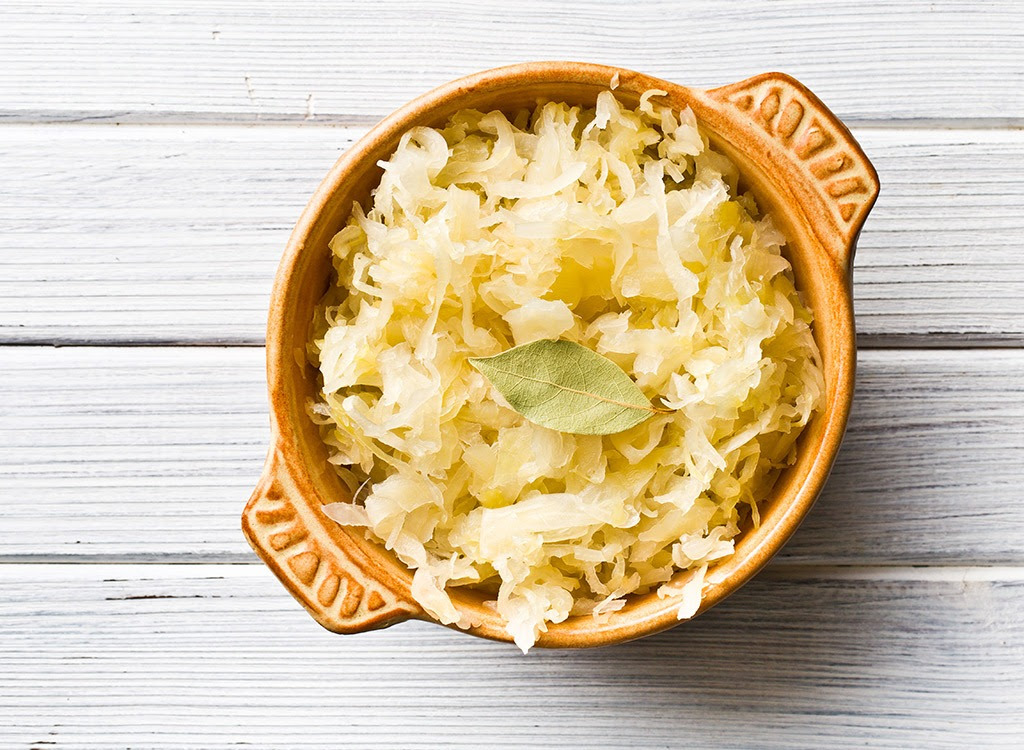
When you think of sauerkraut, a loaded hot dog or a fatty Reuben sandwich could be what come to mind. And there’s not often a middle ground between being a lover or a hater of this stuff. But, for you lovers and haters who didn’t know, sauerkraut is actually a high-fiber, low-calorie, nutritious condiment—when it’s made right, that is. Sauerkraut should be made with two simple ingredients: shredded cabbage and sea salt. Cabbage has a high water content, so by twisting and mashing the leaves after letting it sit in salt for 10-15 minutes, the juices are naturally going to begin extracting. (Translation: There’s no need to add any other liquids.) The liquid that forms should cover the entire mixture, and the cabbage and salt should sit at room temperature, completely covered for at least a week for small batches (and at least a month for bigger batches). Before buying it prepackaged at the grocery store make sure to check the label; they often contain added sugar and preservatives.
Eat This!: Make stuffed mushrooms by stuffing the insides of mushrooms with your homemade sauerkraut, a sprinkling of breadcrumbs and Parmesan cheese, and a drizzle of olive oil.
PICKLED VEGETABLES
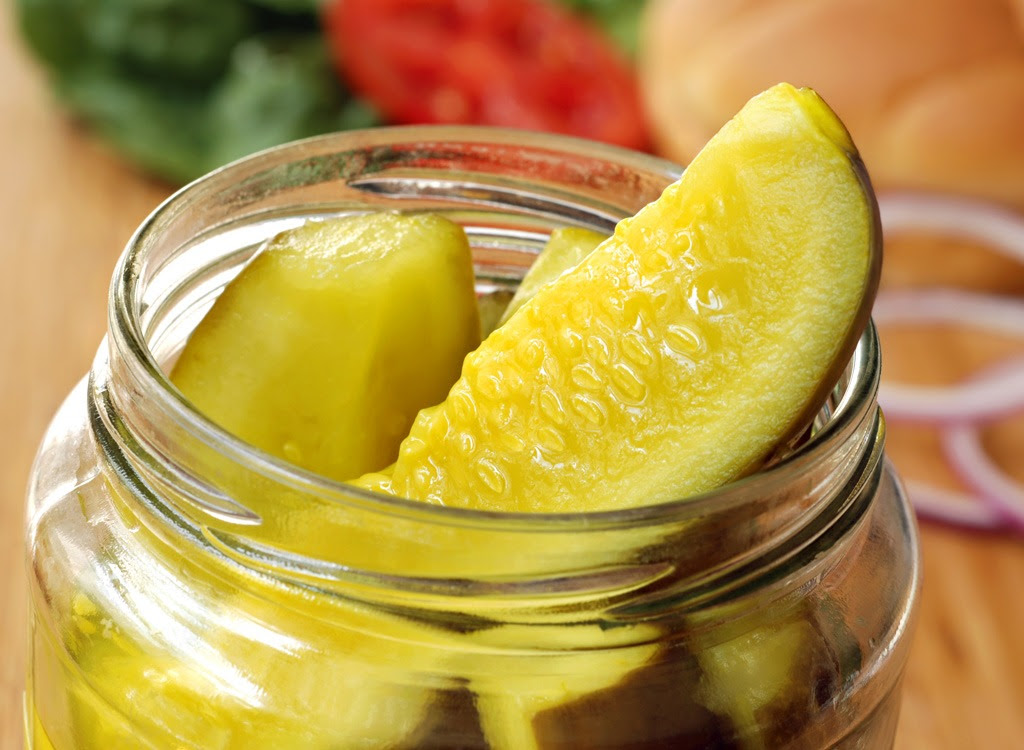
Other vegetables besides cabbage can be fermented, too. “But it’s important to distinguish that not all pickled vegetables are fermented,” say Willow Jarosh MS, RD, and Stephanie Clarke, MS, RD, co-owners of C&J Nutrition. “In order to get the health benefits from eating fermented foods, you’ll want to be sure that the pickled veggie you’re eating is, in fact, fermented—and not just pickled.” Using the same process as the sauerkraut, you can ferment carrots, cucumbers, cauliflower, garlic, and tons of other vegetables. Since not all veggies have the same amount of water as cabbage, you may have to make a brine for the mixture to sit in. The methods vary depending on taste, special dietary requirements and which vegetable is being fermented.
Eat This!: Stuff your sandwiches, top your patties or just simply enjoy straight out of the jar!
KIMCHI
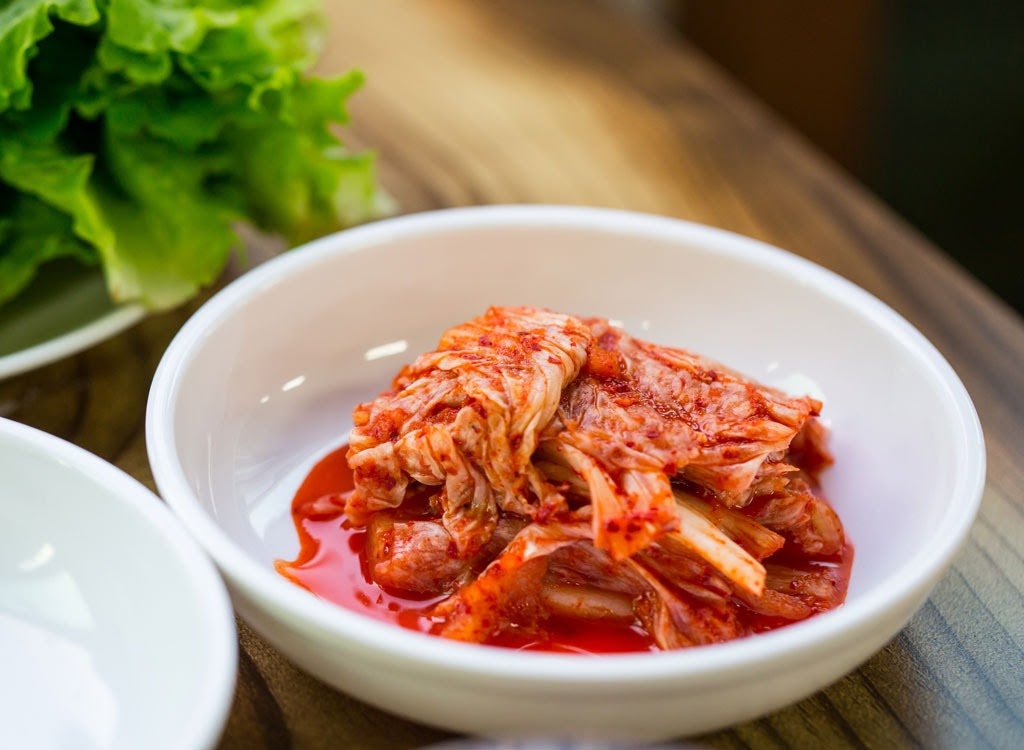
Kimchi is another variation of fermenting vegetables that was developed in Asian cultures. “The nutritional benefits of kimchi will widely vary, based on what ingredients are used,” Jackie Ballou Erdos, R.D. says. “Typically, vegetables like cabbage, radishes and scallions are used, which provide nutrients including vitamin C, B vitamins, calcium, vitamin K, iron, and fiber.” (Ginger, salt, sugar, water, and spices are all involved, too!) Seeing sugar on the list of ingredients may scare you at first, but the salt brine will kill off bad bacteria and leave good bacteria that converts the sugar into lactic acid to preserve and flavor the vegetables.
Eat This!: Mix your kimchi with roasted seasoned potatoes and grilled asparagus. The different flavor profiles combine to make a meal to die for!
NATTO

Natto is made by boiling and fermenting soybeans with bacteria that increases their nutritional value. Among the array of fermented foods from Japan, this tops the list for health benefits. There is a unique enzyme in Natto, Nattokinase, which is recognized because of its property to dissolve blood clots. Also, since it is made from soybeans, there is a ton of protein, fiber, vitamins K2 and B2, calcium, and iron. The smell and appearance of Natto may turn you off at first; it has an interesting, unique scent and stringy, gooey look to it. Don’t let that deter you, though. The taste is great, and the benefits are well worth it!
Eat This!: Eat Natto on top of a bed of brown rice or quinoa with some scallions, herbs, and soy sauce. Make sure to top dishes once they are cooled because it will lose its health effectiveness after being heated over 150 degrees Fahrenheit.
BEET KVASS
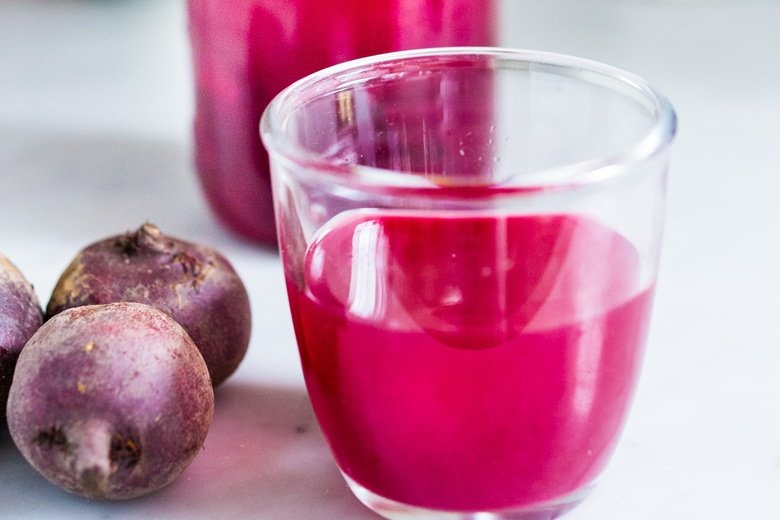
If you haven’t heard of Kvass before, you soon will. The fermented drink is slowly catching up to the trendiness of kombucha, most likely because of its probiotic characteristics that lead to major health benefits. This drink originated in Russia, traditionally made with stale sourdough bread. To D.I.Y. it, mix salt with chopped beets in a mason jar and fill with filtered water. Stir well and let sit at room temperature, covered for about 2-7 days before straining and moving to the refrigerator. The longer the beets are left to become fermented foods, the more developed the flavor will be. Beets are already a great source of dietary fiber, so by fermenting them, the positive digestive properties are through the roof!
Eat This!: Drink it up or use it as a bright salad dressing by combining with vinegar and pepper. It also tastes great over grilled chicken and quinoa!
BEER
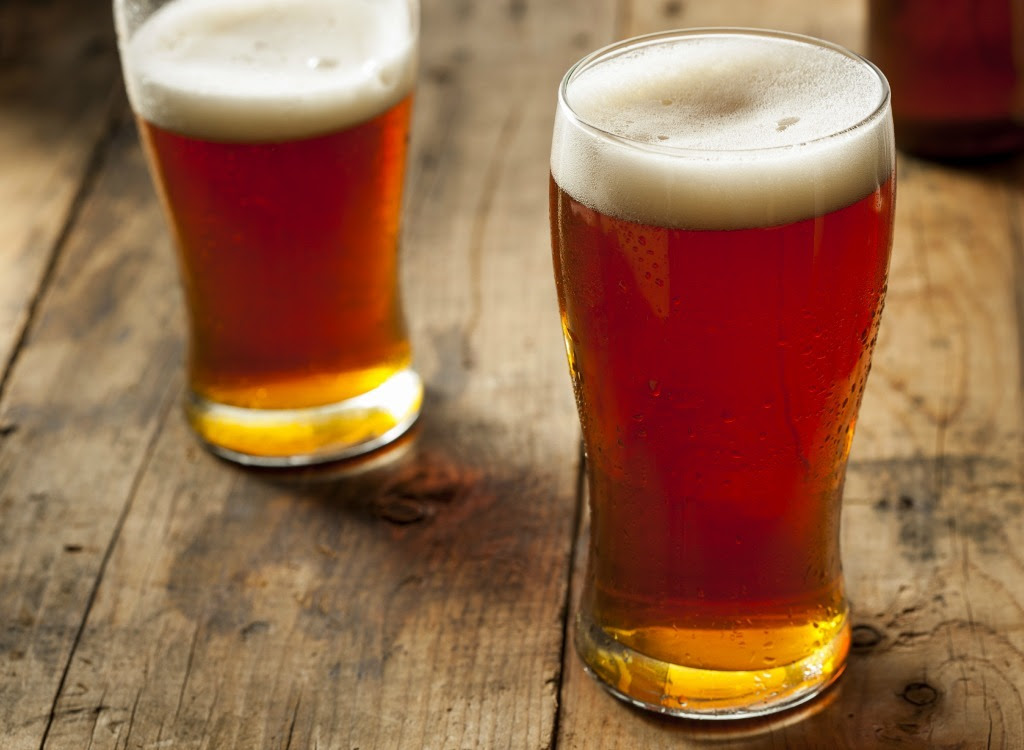
Okay, okay, so we’re not telling you to go out and drink a 12-pack; that will just lead to belly bloat and excessive weight gain. But fermented alcoholic beverages like beer do actually have some benefits when drank in moderation. The vitamins from the grains that beer is made out of (such as barley, wheat, rice, and corn) survive the fermentation and filtering process and can lead to good cholesterol and decrease blood clot formation.
Eat This!: Combine whole grain mustard, beer, and spices. Marinade it onto your favorite proteins like chicken or tofu.
CONDIMENTS
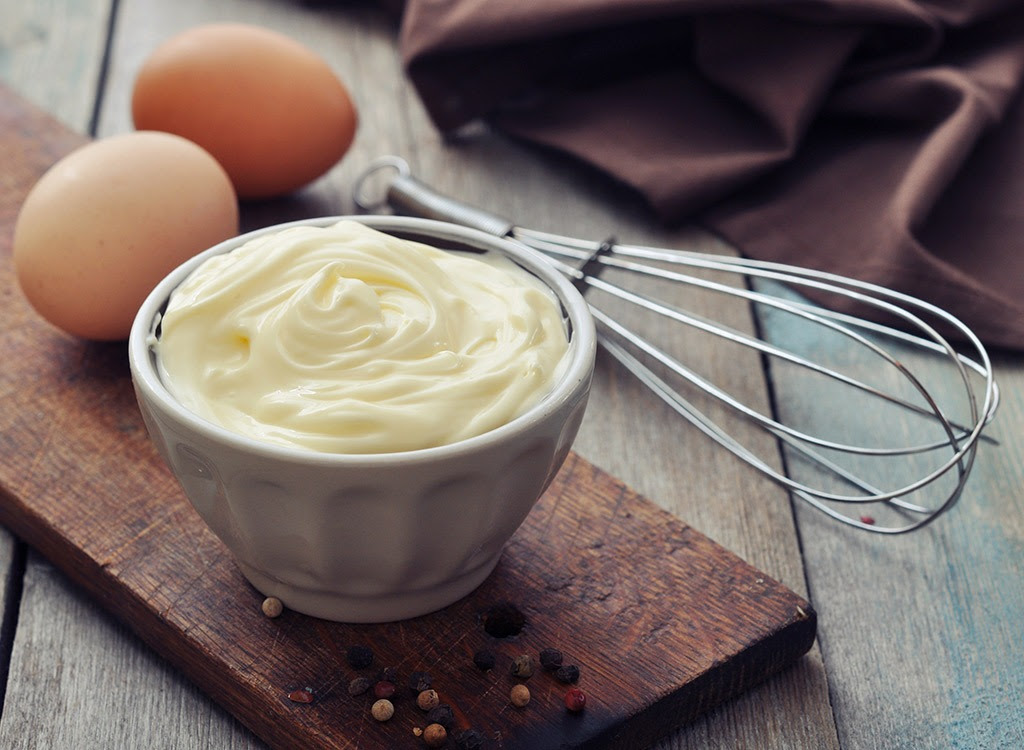
From salsa to mustard, all of the classic condiments that you would typically purchase at the grocery store can be fermented, too! Use whey (the watery part of yogurt) or juice from homemade sauerkraut as the starter for the fermentation and combine with the usual ingredients. Voila! Easy as that, and you get to skip the sugar and fake additives.
KOMBUCHA
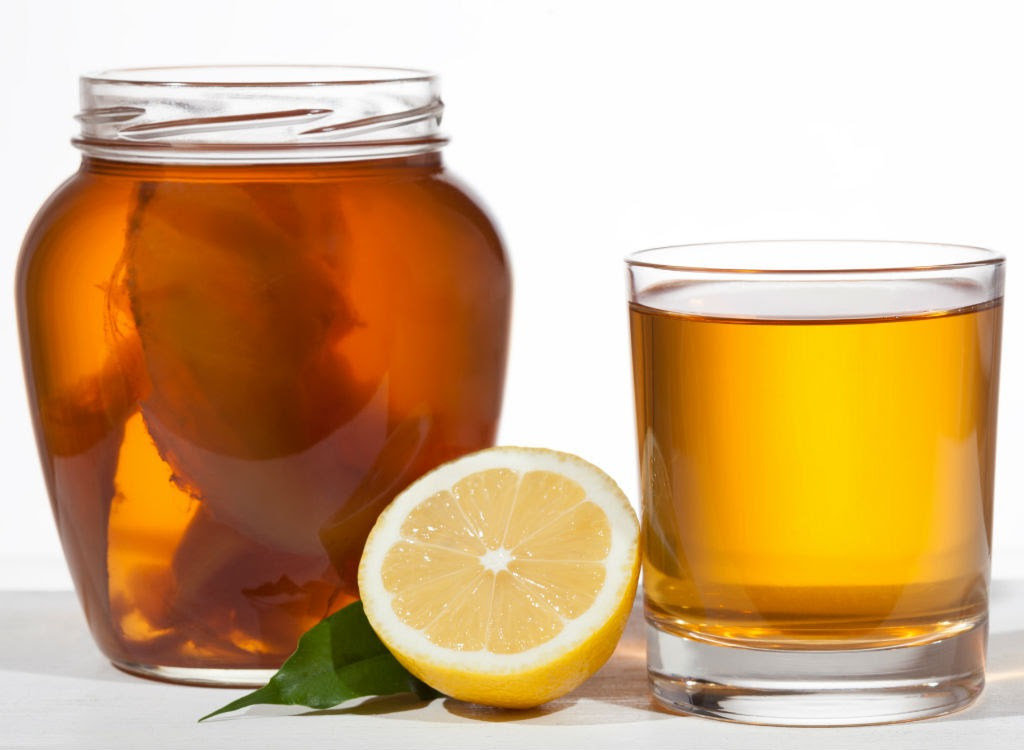
And what would a fermentation story be without the highly talked about kombucha? So, last but not least: Kombucha is a fermented drink made with tea and a culture of bacteria and yeast, and it is surrounded by controversy concerning its health benefits. The fizzy drink usually has a semi-sour, yet sweet taste that can be off-putting to some—but addictive to others. The elixir has been said to improve digestive function and remove toxins from the body, but there is no actual scientific evidence behind these claims. “In order to keep the probiotic benefits, the kombucha tea must not be pasteurized—means it increases the risk of contamination,” The Nutrition Twins, Lyssie Lakatos, RDN, CDN, CFT and Tammy Lakatos Shame point out. But there is also a link between unpasteurized drinks with liver damage and bacterial infections. That’s where the confusion lies. So, if you have any deficiencies or are trying it for the first, time make sure to check with a specialist first.
Try making your own naturally fermented foods
Below is a recipe from the book Always Delicious by Dr. Ludwig and Dawn Ludwig that can help get you started.
Spicy pickled vegetables (escabeche)
These spicy pickles are reminiscent of the Mediterranean and Latin American culinary technique known as escabeche. This recipe leaves out the sugar. Traditionally, the larger vegetables would be lightly cooked before pickling, but we prefer to use a quick fermentation method and leave the vegetables a bit crisp instead.
- 2 cups filtered water
- 1 to 1-1/4 tablespoons sea salt
- 2 tablespoons apple cider vinegar
- 1 jalapeño or a few small hot chiles (or to taste), sliced
- 1 large carrot cut into 1/4-inch-thick rounds or diagonal slices
- 1 to 2 cups chopped cauliflower or small cauliflower florets
- 3 small stalks celery (use only small inner stalks from the heart), cut into 1-inch-long sticks
- 1 bay leaf
- 1 cabbage leaf, rinsed
Warm the water (no need to boil). Stir in the sea salt until it dissolves completely. Set aside to cool (use this time to cut the vegetables). Add the vinegar just before using. The brine can be made ahead of time and stored in a sealed glass jar on the counter to use when ready to pickle.
Set a quart-size canning jar in the sink and fill it with boiling water to sterilize. Empty the jar and tightly pack the vegetables and bay leaf inside to within 1 to 2 inches from the top of the jar. Pour the brine over the vegetables to fill the jar to within 1 inch from the top. Wedge the cabbage leaf over the top of the vegetables and tuck it around the edges to hold the vegetables beneath the liquid.
Set jar on the counter and cover with a fermentation lid. (Alternatively, use a standard lid and loosen it a bit each day for the first few days, then every other day, to allow gasses to escape.) Let pickle for three to five days, depending on the indoor temperature. Check the taste after a couple of days, using clean utensils. Vegetables will pickle faster in warmer climates. Make sure the vegetables stay packed beneath the level of the liquid and add salted water (2 teaspoons sea salt dissolved in 1 cup warm filtered water) as needed.
When the vegetables are pickled to your liking, seal the jar with a regular lid and refrigerate. Vegetables will continue to slowly pickle in the refrigerator. They will keep for about one month. Taste for saltiness before serving and, if desired, rinse gently to remove excess salt.
- Calories: 1 (per 1 tablespoon)
- Carbohydrate: 0 g
- Protein: 0 g
- Fat: 0 g
What are fermented drinks?
Fermented drinks are typically made from fruit juices, herbal infusions, soaked grains, green and black tea that have been allowed to culture or ferment for a period of time. As a result, these drinks are generally a good source of probiotics, beneficial bacteria and yeasts.
They include beer and wine, as well as probiotic beverages like kombucha, milk kefir, water kefir, tepache, beet kvass and whey sodas.
Do they contain alcohol?
Brewers ferment some drinks, like wine and beer, specifically for their alcohol content. And others brew ferment drinks, like wild sodas and kvass, for their probiotics.
Accordingly, lightly fermented drinks, like jun tea and water kefir, contain only negligible amounts of alcohol. Most fermented drinks contain less than 1% alcohol by volume, and typically closer to .5%. In other words, that’s about the same amount that you’ll find in orange juice.
Sugar Content
In order to ferment properly, cultured beverages and tonics need a caloric sweetener like sugar, honey or fruit juice. Sugars feed the beneficial microorganisms that are responsible for fermentation. And, without them, your drink won’t ferment properly.
As a result, many probiotic drinks still contain a fairly notable amount of sugar.
Are they good for you?
Lightly fermented drinks are an excellent source of beneficial bacteria and yeast that help to support digestive system health. Moreover, each different drink will offer slightly different benefits. And that’s because their benefits depend upon the bacteria and yeast used to culture them. Accordingly, the more diverse the bacteria in the starter culture, the more microbiologically rich the drink will be, and the greater benefit you’re likely to obtain from drinking it.
Fermented drinks are functional foods. That is, they’re foods that convey more benefits than providing nutrition alone.
That’s primarily because they contain beneficial bacteria. Further, many of them contain fruits, vegetables, herbs and teas which are also high in antioxidants and phytonutrients. In combination, those probiotics and micronutrients, can offer some serious nutrition.
- Fermented foods and beverages support the digestive system
- They may also support liver health
- Probiotic-rich foods and drinks also support oral health, too
- The probiotics found in fermented foods also play a substantial role in the proper function of the immune system – both in combatting illness and in mitigating autoimmune disease
It’s easy to understand why fermented drinks have a substantial role to play in a whole-foods diet. Fortunately, they’re really easy to make at home.
Starter Cultures and SCOBYs
If you’re just getting started with fermentation, there’s a few things you should know. Primarily, most fermented drinks rely on a starter or a SCOBY (symbiotic culture of bacteria and yeast), while others use wild fermentation.
These starters inoculate your sweetened herbal infusion, fruit juice or other substrates with specific bacteria and yeasts that help them to culture safely and effectively.
The Cultured and Fermented Drink List
All fermented drinks use the same, basic method – allowing a drink to culture at room temperature for a few days up to several weeks. However, there’s three categories of fermented and cultured drinks, and each category requires a slightly different method.
Fermented Drinks that Use a SCOBY
Kombucha and Jun Tea are fermented drinks that you make by culturing tea with a sweetener and a SCOBY. Kombucha uses black tea and sugar, while Jun uses green tea and honey.
The result is a slightly acidic, often fizzy drink that’s rich in B vitamins and beneficial acids. Brewers make both Jun and Kombucha in open crocks – sometimes with the continuous brew method. Next, after the initial brew, you can add flavorings like spices, fruit or fruit juices to make flavored kombucha.
Water kefir is a traditional fermented drink with deep roots in pre-Columbian Mexico. Like Kombucha and Jun, you need a SCOBY to make it. This SCOBY, called water kefir grains or tibicos, turns sugar water into a bubbly drink. You can also flavor it for recipes like Cherry Water Kefir or this one that uses adaptogenic herbs.
Ginger Bug and Whey Sodas
Ginger bug and whey act as starters, much like SCOBYs do. They give fruit juices and sweetened herbal teas the boost of beneficial bacteria and yeasts they need to make a traditionally fermented brew.
You can use both ginger bug and whey as a starter for other fermented drinks. Homemade herbal root beer, fermented lemonade and this mango soda are fun to make. And fermented berry-ginger sodas are nice too, like this Raspberry Ginger Soda and this version that uses blackberries.
Wild-Fermented Sodas and Tonics
While many fermented drinks depend upon a SCOBY or starter culture to ferment properly, others use wild fermentation. To clarify, they ferment using only the wild bacteria and yeasts that populate your kitchen.
Common wild-fermented drinks include Tepache de Piña, which brewers make by fermenting pineapple peels with sugar and spices. Brewers also often make beet kvass as a wild-ferment.
Gather Fermentation Equipment
There are several affordable fermentation jars and kits out there. These sets help to make things a little easier – but to be honest you can ferment with nothing more than a mason jar.
Food Journal:
- Continue to log your daily food intake
- Take time to look back and reflect on the changes so far


